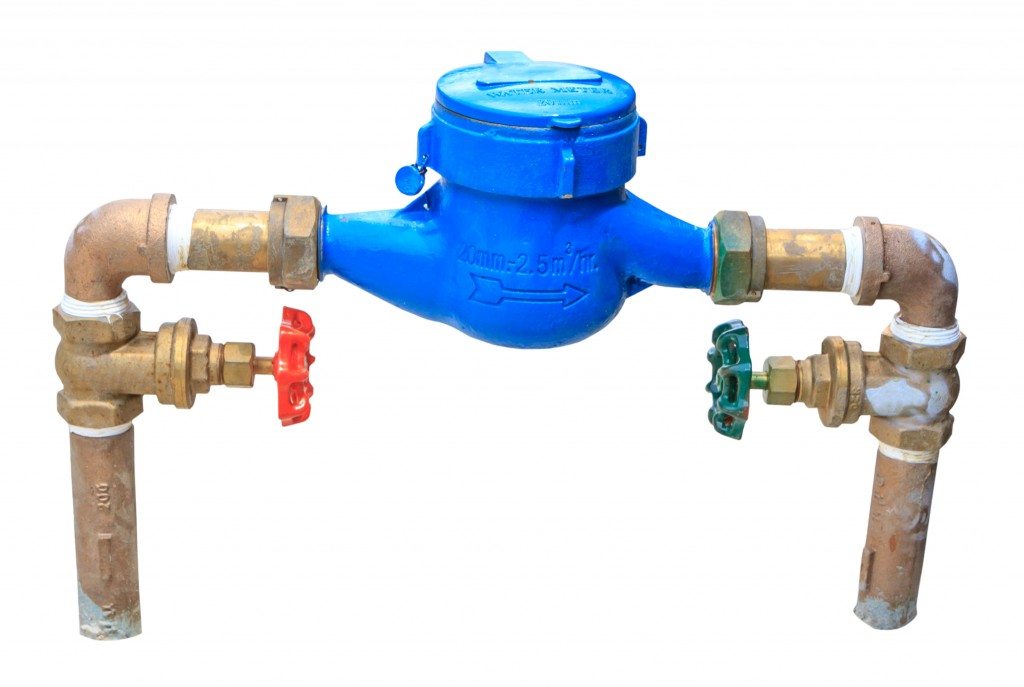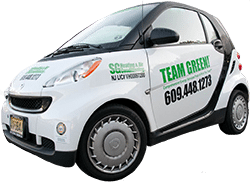HVAC and Plumbing Self-Help Tips
Water Leaks and Heating or Air Conditioning Failures
Severe Water Leaks
Most plumbing fixtures have a shut-off valve located close to the fixture, and water heaters usually have a valve on the cold water inlet. If you have a leaking tank-type water heater, it may continue to leak the contents of the tank until it is empty, even if you shut off the water heater. You should shut off the gas or electric feed to the water heater first, but make sure you don’t touch any electrical circuits or switches if you are standing in water.If you can’t identify where the leak is coming from, or where the shut-off valve is, you may need to shut off the water main. Knowing how and where to shut off your main water supply is as important as knowing how and where to turn-off or reset an electric breaker or how to replace a fuse. In our climate and area, the water meter and associated shut-off valves are almost always located inside the house. A typical water meter looks like this:

Knowing what a water meter and associated shut-off valves look like can be helpful in fixing minor plumbing issues
- In Basements – the water shut-off valve is typically located near the front foundation wall nearest the street. The main water may come through the concrete floor or through the wall. The water valve and meter are typically located no more than a few feet from where the main water enters. In some cases, the main water may enter in a different area, like a mechanical room, up through the floor, or near the water heater or furnace.
- In a Crawl-space with no basement – the main shut-off valve will typically be located near the water heater or under the kitchen sink, but since every house is unique, anywhere is possible.
- In Slab-on-grade construction – the main shut-off valve will typically be located near the water heater or under the kitchen sink, but anywhere is possible.
Closing the Main Water Shut-Off Valve
Main valves are usually located on either side of the water meter. Close one, and if it doesn’t hold, close the other.- Round “wheel” handle valves will turn-off by turning the handle to the right (clockwise.) It may take 2 or more full revolutions.
- Slowly turn level handle valves ¼ turn, until the handle is perpendicular to the pipe. It should stop at a ¼ turn.
- Open a tub or sink faucet (hot & cold), on the highest level of the house to relieve pressure and watch that spout to ensure a full shut-down.
Is it just a simple problem causing your Heat or AC to stop working?
If your heating or air conditioning system isn’t working, a simple problem may be the cause. Our technicians often find the items listed below when investigating no heat/no cooling complaints in furnaces and other heaters and cooling systems. Review the following tips. You may be able to get your system running without the need for a technician’s visit.*1. Make sure that your thermostat is set correctly. The function switch should be set on heat or cool, and the temperature setting should be at least three degrees above or below the room temperature. Some thermostats have built-in time delays, so wait ten minutes to see if setting changes have an effect.
2. If you have a warm air furnace or central air conditioning system, inspect the air filter and replace it if it is dirty. Dirty filters can cause AC systems to freeze, and furnaces and/or blowers to overheat.
3. Make sure the furnace or air handler blower compartment door is securely closed. Most equipment has a safety switch that will disable the blower if the door is loose or ajar.
4. Make sure all electrical switches are on. You may find these switches located on or near the unit and at the head of the basement stairs, near the attic access, or in the equipment closet, depending on where the equipment is located. These switches usually are located high on the wall or on or near the equipment itself, and have red covers. This is one of the most common reasons our technicians find when a system is completely inoperable, with no heat, AC, or fan.
5. Check your circuit breakers to see if one has tripped. For most types of circuit breakers it’s necessary to push the handle completely to the off position to reset it before returning it to the on position. The circuit breaker or switch for the heater may also affect the air conditioner.
6. Verify that all gas shut-off valves and gas controls are in the “on” position, including at the meter. The gas utility may have “locked out” the meter without your knowledge.
7. Most modern gas equipment doesn’t have a pilot light, but if the heater is equipped with a standing pilot, check that the pilot is lit. A label with the pilot lighting instructions should be attached to the heater. Follow the manufacturer’s directions to relight the pilot.
8. If you have an oil burner, make sure you have oil in the tank. If you don’t have automatic delivery you may have simply run out of oil.
9. Check the burner control. Press the red button once to reset, and see if the burner comes on. If the flame does not light, or if the burner makes unusual noises or smokes, shut the system off using the power switch. Do not reset the burner more than once.
If you’re experiencing an emergency situation, call the SG Heating & Air Conditioning LLC team immediately at 609-448-1273.
Warning
*Water leaks can cause damage to person and property, and can interact with electric circuits to create shock hazards. If circuit breakers and burner controls trip repeatedly, or there is smoke or unusual noises coming from the equipment, these can indicate a serious problem. Faulty heating and cooling equipment can generate carbon monoxide, smoke, and fire, and can cause water damage and other property damage, injury, and even death. If you have any concerns as to your equipment’s condition, you should have a professional evaluate its safety and functionality. These tips are a guide to help you recognize and correct minor problems with your own equipment, and are not intended to be a substitute for the services of a competent technician. Perform them at your own risk. If you feel you cannot carry out any of these tips safely, contact a professional for service.


